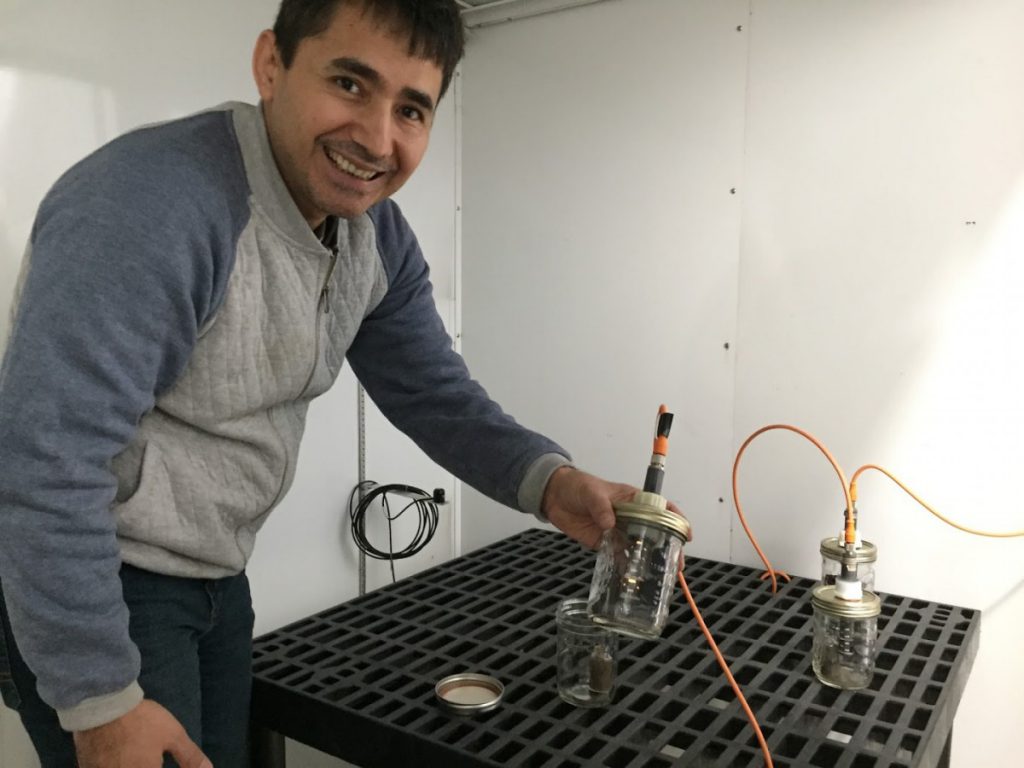Soil Microbial Respiration Measurement Deploying Non-Steady-State Chambers Integrated Into Conviron Growth Chambers
Nosir Shukurov (Fulbright Visiting Scientist from Institute of Geology and Geophysics, Uzbekistan), Viktor Tishchenko (Griffin, University of Georgia)

Soil basal respiration measurement is widely used in studies of soil C cycling, net crop photosynthesis estimations, overall soil biological activity estimations, heterotrophic microbiological activity studies etc. Chamber technique can be adapted to a wide range of experimental objectives and commonly used approach in soil respiration estimations. In order to efficiently and economically measure soil respiration in large number of samples over extended incubation period, we chose non-steady-state chamber design (static system) that allowed us to integrate Vaisala GMP 222 carbon dioxide probe (widely used in Conviron chambers)
into small-volume soil respiration chamber and perform real-time CO2 measurement under controlled environment conditions (PGW36 Conviron chamber). Time-dependent CO2 diffusion error was reduced by adding ventilation inside the respiration chamber (resembling flow-through chamber type), taking measurements at constant chamber deployment intervals, and increasing soil sample surface area. Based on continuous CO2 concentration measurements (18 second interval), the rate of CO2 accumulation (ΔC/ΔT) was estimated from the slope of the linear regression line. Experimental trial in the Calcisol soil sample showed initial two-fold increase in the respiration rate during the first 3-4 days of incubation and then gradually decreased for 3 weeks.